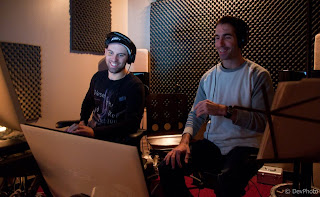Nahlah Ayed’s memoir, A
Thousand Farewells, is riveting collection of life experiences relative to
the author’s connection to the Middle East. The authors personal account of war
in the Middle East presents a relevant perspective on the effects of modern warfare:
The book illuminates not only the scars inflicted to soldiers and
infrastructure, but also the (emotional and physical) scars worn by countless
families caught in the crossfire as they struggle to manage their daily lives.
When our Western hand of intervention turns into a fist to
force change, it is common for our media to censor the graphic violence that is
prevalent in the regions of conflict. Most of us are quite disconnected from
death in Canada, even living in the murder capital of this nation, many of us
will never see death in our streets. War coverage on American television pacifies
the violence even further by showing The General Atomics
MQ-1 Predator dropping bombs with the press of a button—while the operator sips
his morning coffee in the Nevada command centre. This glorification of tactical
assault is eerily familiar to the Call Of Duty video games that dominate modern
teenage hobby interests. It is apparent that we as civilians are disconnected
from seeing the full effects of our intervention in the Middle East and other
areas of involvement. A Thousand
Farewells highlights the daily devastation felt by the people of the region
and is not diluted to appease the faint of heart.
The reporting by Nahlah Ayed is very observational and
sometimes poetic in its nature: I found this stimulating and enjoyable. I often
felt that I was looking through her eyes, as a looking glass, when she was
describing vivid events. Reading Ayed’s work has given me respect and
appreciation for the small, specific observational details included in
compelling journalism. When Ayed wrote about the shaking ground from the
dropping bombs, I felt as though I was next to her tasting the dust in the area
with remnants of black powder. During the reporting of bombs dropping in the
distance, the author does not include descriptions of her emotional state
because the scene is so descriptive the reader is engaged to connect their own
emotions to the circumstances. It is so effective when a writer can show you a scene and not tell you; this makes the reading
experience much more intimate and vivid. I believe many journalists can take a
helpful example from Ayed’s work when using poetic language to help color a
scene. Notably, the scene with the “angel of mourning” really captured the
emotional state of Hillah when its dark secrets were being un-earthed. Ayed is really an expert at painting a detailed scene for readers with her extensive
and carefully selected details. They say, “a picture’s worth a thousand words,”
I felt the same effect from Ayed’s descriptive language painting a picture in
my minds eye.
Ayed’s writing bears the professional structure and prose
of a veteran journalist, which is demonstrated with every stroke of her pen
(but most likely keyboard). There are many interesting metaphors contained in
the pages showing the delicate balance of observational poetic expression and
facts that add to the story. For example: the connection between candy bars and
characters that sound as if they were crafted in a child’s imagination.
The use of similar names was often confusing for me throughout the book, but there isn't exactly a way around that while still maintaining integrity. Perhaps some non-essential characters throughout Ayed's experiences could have been omitted, such as, one of the many Abdullahs in the story. I was also surprised that there were never any mentions of romantic interest while traveling in the Middle East. Many details of the authors personal life are investigated and analyzed heavily while other areas are completely ignored.
The use of similar names was often confusing for me throughout the book, but there isn't exactly a way around that while still maintaining integrity. Perhaps some non-essential characters throughout Ayed's experiences could have been omitted, such as, one of the many Abdullahs in the story. I was also surprised that there were never any mentions of romantic interest while traveling in the Middle East. Many details of the authors personal life are investigated and analyzed heavily while other areas are completely ignored.
A very close family member of mine was in the Middle East
for a short diplomatic objective, so in addition to the emotional response from
an already compelling story I felt a strong connection when Ayed was feeling
fear for her safety during the onslaught of conflict. Reading Ayed’s accounts
of the dangerous elements in these troubled Middle Eastern cities prompted me
to think of my family member and what he must of felt when touching down in
that region for the first time.
I can honestly say that I have learned many important and
practical lessons that will be a helpful influence on many future journalistic
projects. I have always had a lot of curiosity about the recent invasion of
Iraq and what the Iraqi citizens must have thought of George W. Bush’s
allegations that subsequently led to war in their homeland. I strongly believe
that it’s infinitely valuable for two cultures engaged in conflict to understand
each-others perspective because war ultimately is the product of indifference
affecting diplomatic failure. Books such as “A Thousand Farewells,” contribute
to the very antithesis of war itself: understanding.





